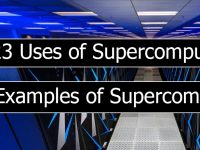Definition of logical topology
A type of topology that gives a virtual representation of all the nodes connected in the network. I mean this topology explains how data is transferred in the network. For example, it explains how data move from switches and routers.

There are two types of logical topology:-
Bus topology:
In a bus topology, all the nodes are connected to a central bus. All computers or nodes have the same level of authority to transfer data. In a bus topology, the data moves in half-duplex mode i.e. data is either received or transfer at a time. The data moves in one direction at a time.
You can also check:
Ring topology:
Ring topology is also a type of logical topology. In-ring topology the computers are connected in a ring shape i.e. first computer is connected to the second computer and the second computer is connected to the first computer and third computer. The last computer is connected to the first computer and hence it makes a ring shape. If any data is to be moved from the first computer to the third computer then the first data moves to the second computer and then the second computer finally moves the data to the third computer. The computer with a token has permission to send the data. By using a token the collision of data is prevented in the network.
You can also check:
Some features of logical topology are:-
- It is easy to maintain and troubleshoot computers in the network.
- It is concerned with how data is transferred in the network.
- The path of data is tracked by this network topology.
- Logical topology exists in bus and ring topologies.
- The speed of data is measured in this topology. Also, the delivery of data packets is calculated.
- The logical topology usually works smoothly and you don’t find any interference and change in the network.
- Logical topology is an overview of representing data inflow.
Example of logical topology:
- Ethernet networks
- Scanners and printers that are connected to the network
- Data movement in a client-server network
- Logical topology is used in Wide area networks also
- Also used in the metropolitan area network


















